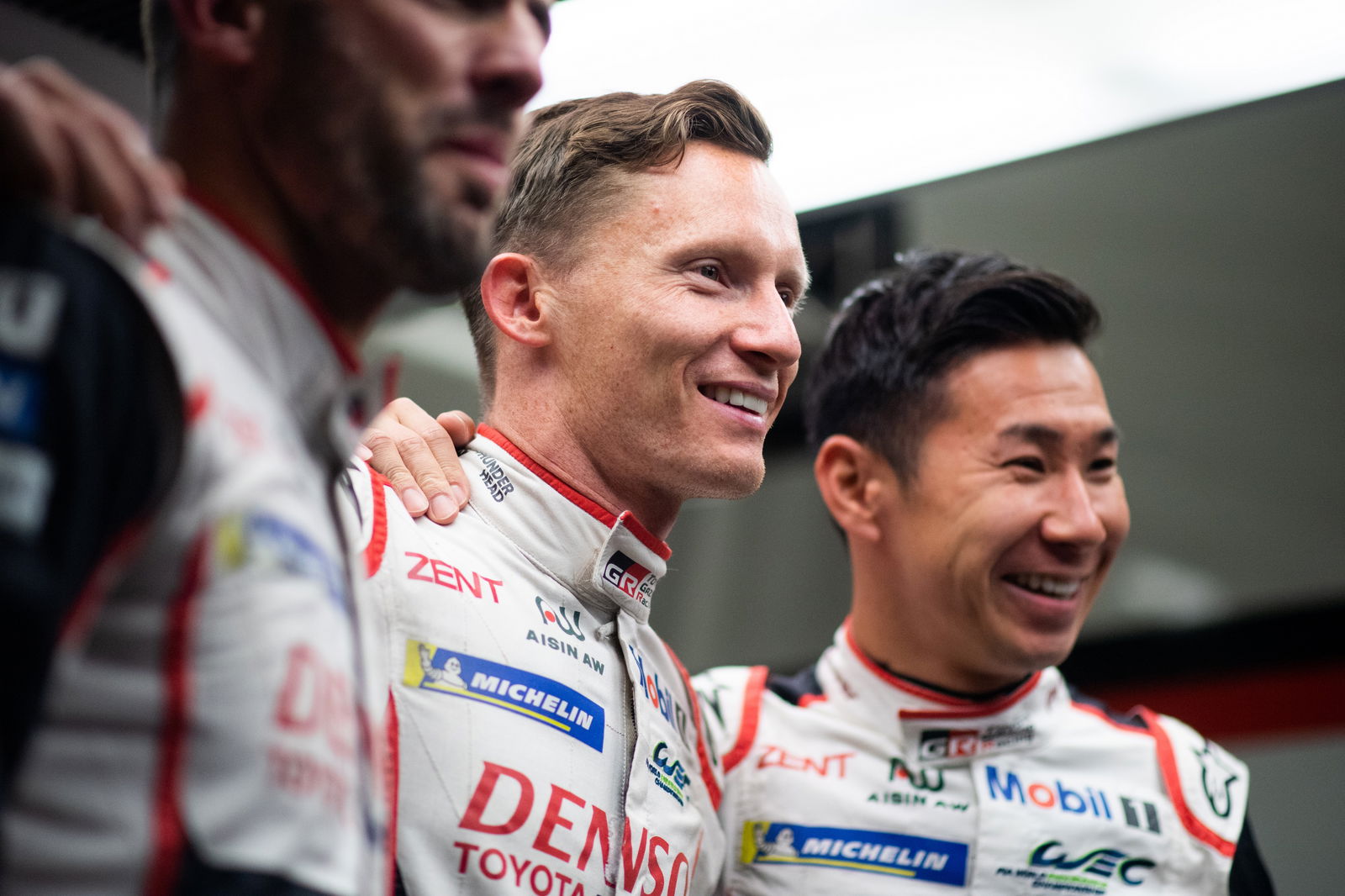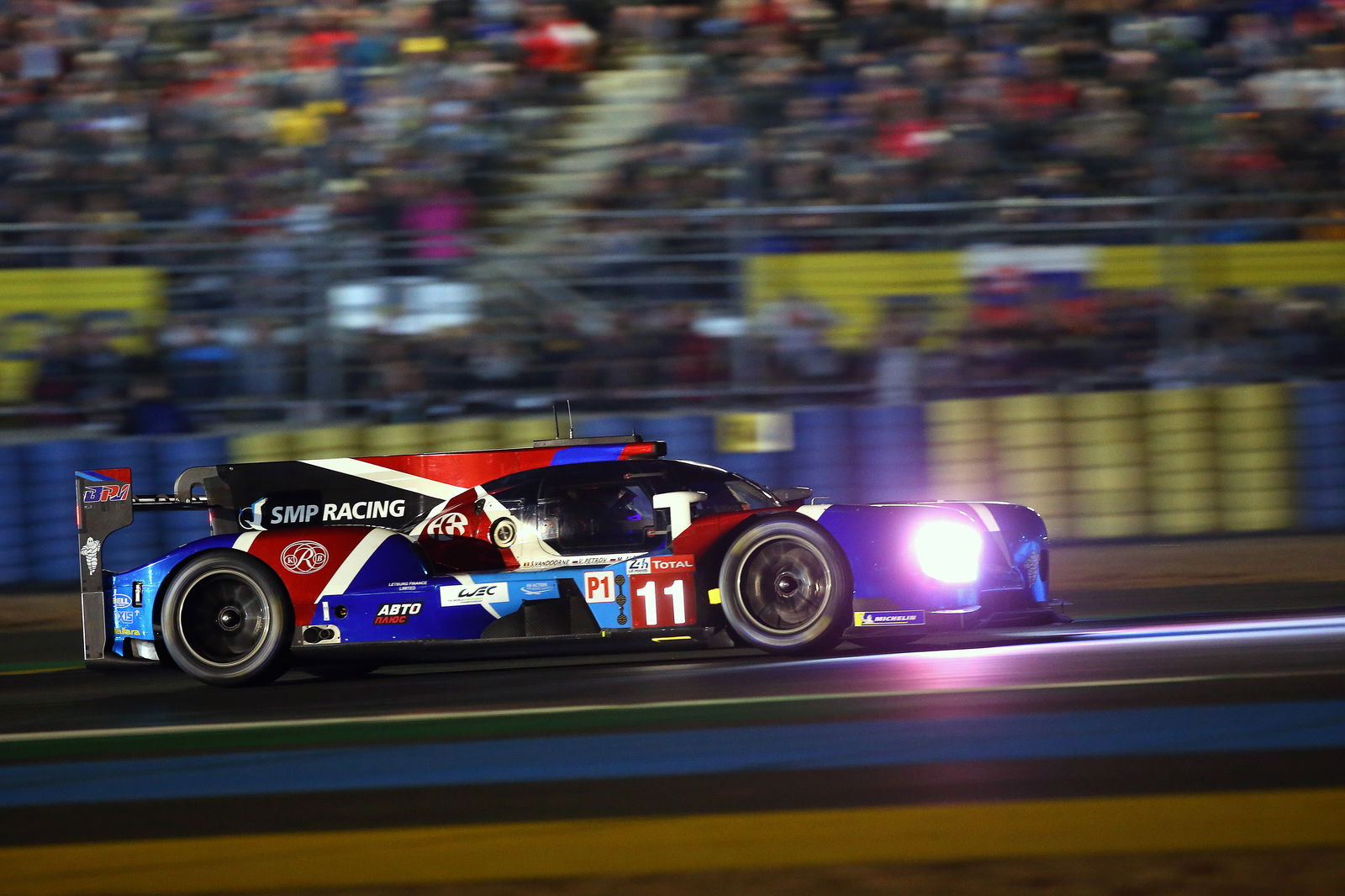How the cruelty of Le Mans struck Toyota again
How fitting that this, an FIA World Endurance Championship season that was deemed to be oh-so-predictable, would offer a late sting in the tail.
And where else but at Le Mans, the cruellest of all motor races?
Toyota may have cruised to its second straight one-two finish at the Circuit de la Sarthe to cap off the WEC ‘super season’ in dominant style, but the late drama left a sombre feeling throughout the team amid the post-24-hour-race high felt throughout the paddock on Sunday evening at Le Mans.

How fitting that this, an FIA World Endurance Championship season that was deemed to be oh-so-predictable, would offer a late sting in the tail.
And where else but at Le Mans, the cruellest of all motor races?
Toyota may have cruised to its second straight one-two finish at the Circuit de la Sarthe to cap off the WEC ‘super season’ in dominant style, but the late drama left a sombre feeling throughout the team amid the post-24-hour-race high felt throughout the paddock on Sunday evening at Le Mans.
The #7 Toyota TS050 Hybrid had produced one of the most complete Le Mans performances seen in years. Bar a period just before midnight, it had led the entirety of the race – a good 22 of the 23 hours, or all but 30 laps – until drama struck, turning the race on its head completely.
It was set to be a result that would please everybody. Mike Conway, Kamui Kobayashi and Jose Maria Lopez would get a long-awaited first victory at Le Mans after collectively dominating the race. The sister #8 trio of Fernando Alonso, Kazuki Nakajima and Sebastien Buemi would finish second, doing enough to wrap up the WEC drivers’ title, even if they missed out on another Le Mans win.
Built on the foundations of Conway’s stunning opening stint that saw him open up a 40-second lead in a couple of hours, the #7 Toyota had built a two-minute advantage come the final driver changes – about two-thirds of a lap at Le Mans – that was unassailable barring anything out of the norm.
But this is Le Mans, a race that is said to pick its winners. Today, it did not pick the #7 Toyota.
After a puncture was reported late in the lap, Lopez was forced to dive into the pits for an unscheduled pit stop towards the end of the 23rd hour. The team opted to change the affected tyre instead of all four, wishing to save an extra couple of seconds. Lopez trundled back onto the circuit, only for the same warning to flash on his steering wheel: ‘PUNCTURE’.
A faulty sensor had caused the team to change the wrong tyre.

“I couldn’t believe it,” Conway told Crash.net after the race. “I heard someone on the radio, and I wasn’t sure if I heard that right. And then I saw the thing on the TV. You’re just gutted.”
“The puncture was very low at that time, 0.5 bars, so I couldn’t go more than 100 kph,” added Lopez. “13 km is a long lap. Our hopes of winning dissolved there.”
By the time Lopez had hobbled back into the pits, he was already in second place. Kazuki Nakajima had wiped away the two-minute deficit that existed just two laps earlier, diving past at the Porsche Curves and into the lead of the race for the first time in over 14 hours.
It was all too late for the #7 to fight back. Both cars had one more stop to complete, after which there was a 20-second gap between them. Lopez reduced this to 16 seconds before the end of the 24 hours, showing just how fine the margins were.
Naturally, there were questions for Toyota to ask in its post-race analysis. Why didn’t it play it safe and change all four tyres? Why, for all of the inventive ways it had pushed the TS050 Hybrid to its limits through testing, such as driving it on three wheels or with a cone stuck in a wheel, had it not accounted for something like this?
“It’s unfortunate, isn’t it? You never get sensors that are reading wrong in a car,” Conway said. “You get the odd one I guess, but at the moment it really counted…”
The technicalities of the #7’s defeat are put to one side in the immediate aftermath of the race. As Buemi and Alonso made their way onto the pit straight carrying Toyota flags to meet Nakajima and hitch a ride back to the pits to celebrate, Conway and Kobayashi were left out of the car coming to terms with such a bitter defeat.
They, in particular, had been the stand-out stars of the 2019 24 Hours of Le Mans. Kobayashi once again proved himself to be the qualifying king at the Circuit de la Sarthe. And Conway? Coming back from his Q1 crash on Wednesday to produce such a crushing display in the race, creating the lead in his first stint; reclaiming it after a Safety Car wiped it away in his second; then consolidating the advantage in the third – it was masterful. Similar to Alonso in 2018 or Nick Tandy in 2015, Conway put in the defining performance of the race.

But it won’t be remembered as a race-winning one. Instead, Conway, Kobayashi and Lopez were left to meander onto the podium and put on brave faces. After 23 hours of perfect execution, a faulty sensor at the top of the 24th had blown their chances.
“It’s a tough race,” Conway said. “We were looking good for a long, long time, and just unfortunately got unlucky with the puncture and the cycle of events after, and didn’t get the win. That’s this race as we know. It doesn’t make it any easier.”
Kobayashi’s opening comment was wry: “Right now, at this moment, I don’t like Le Mans…” He then joked how it had taken Buemi five attempts to win his first Le Mans, meaning he would probably win it next year upon his own fifth appearance.”
Buemi knows the heartache of a late setback at Le Mans only too well from his defeat in 2016. This time around though, he was on the other side of the fence: this had worked in his favour, making for some understated celebrations.
“Today what happened is really hard,” Buemi said. “I can tell you, it hurts, because in 2016 when it happened to Kazuki and myself, it was really hard. I’m really sorry for them.
“Somehow, the race chose us today.”
Both Nakajima and Alonso used the word “sad” when summing up their post-race emotions, offering a great contrast to the jubilant scenes from 12 months ago. None of them were under the illusion that they had been better than the #7 crew in the race.
In fact, the biggest smiles in the post-race press conference came from the SMP Racing drivers who had finished third, some six laps behind the Toyotas. Vitaly Petrov, Mikhail Aleshin, and Stoffel Vandoorne (on his Le Mans debut) had won a brutal fight against fellow LMP1 privateer Rebellion to round out the podium.
This is what Le Mans does to drivers. It offers a mix of emotions few other events in global motorsport can match. It’s not like a regular Formula 1 or IndyCar race, where you’re lumbered with the disappointment for a week or two before the next time you’re out on-track, giving you the chance to right a wrong. And you’ve not just put in 90 minutes of effort to get to this point. You’ve literally pushed for a day solid, with years of development leading to a bid for Le Mans glory. It may be part of the WEC season, but really, this is the one race everyone wants to win.
That opportunity to do so comes down to slender, slender margins. And if it passes you by, it may never come around again. Just ask Anthony Davidson, the teammate to Buemi and Nakajima upon the late-race stoppage in 2016.
But that is the shred of comfort all three of the #7 drivers can take out of this race. They know they did everything right. They’ll be back next year, stronger for this setback.
Much as Buemi and Nakajima weren’t begrudged their first win last year, two years on from their heartbreak, few would be sad to see Conway, Kobayashi and Lopez finally stand on the top step next year. Really, 2019 was their race.
Le Mans can be cruel like that, though.

